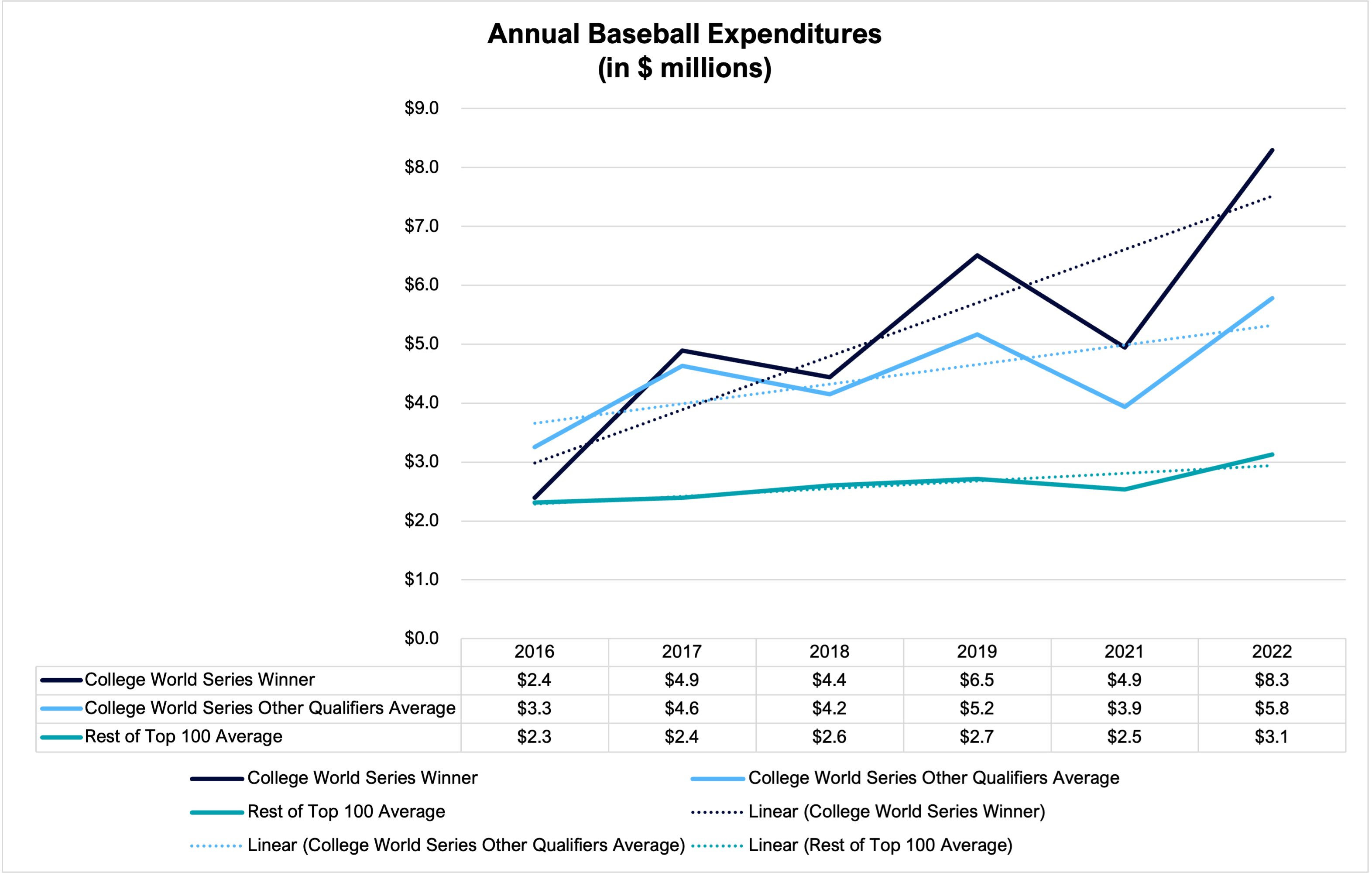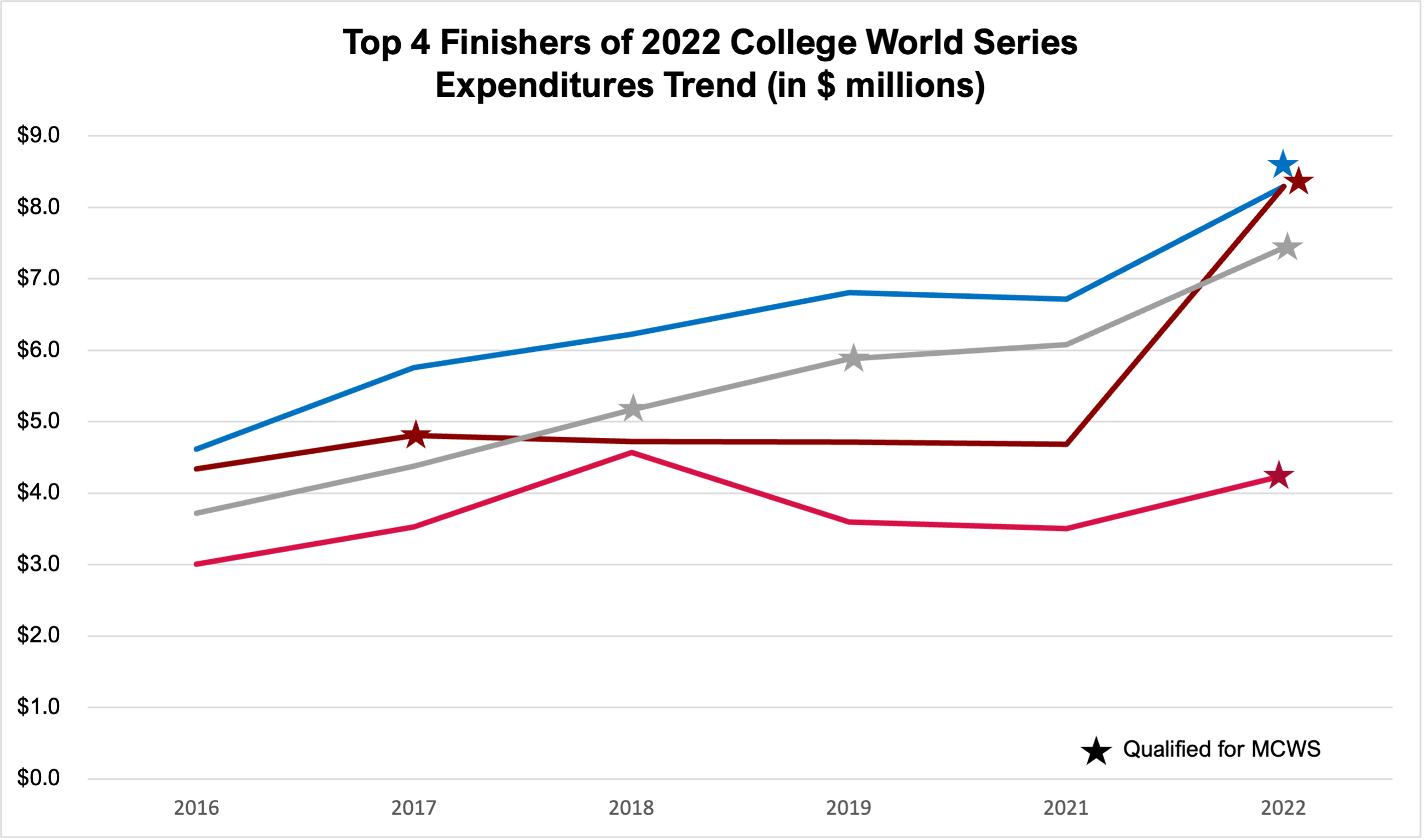What do you need to spend to have a team worthy of the baseball world series?
On June 16th, the first pitch was thrown in the 77th Men’s College World Series (MCWS) commenced on June 16th in Omaha, Nebraska. Florida, Virginia, Oral Roberts, TCU, Wake Forest, LSU, Stanford, and Tennessee made the exclusive final eight. Let’s take a look at the bench (marking) to see what we can learn about the relationship between athletics spending and athletic success.
Getting Control of Your Athletic Spending
There are a number of factors that determine if your team makes it to the world series. That goes without saying. But athletics departments can exert some control over their spending, making this a factor that could turn a foul ball into a home run.
Let’s compare the spending trends of three groups of baseball teams over the course of six years, 2020 omitted.

Source: Gray’s Athletics Benchmarking Data
All three groups are increasing their spending over time, but to different degrees as shown by the slopes on their trendlines.
The teams that have won the MCWS have increased their spending at the highest rate. In 2016, a school won the title while spending $2.4 million. Unlike other recent MCWS winners, their spending was in line with the $2.3 million average of the non-qualifying teams representing the top 100 in terms of spending. In contrast, by 2022 the winning team spent $8.3 million, more than all but one other team (which spent $9.6 million). The 2022 winner’s baseball costs accounted for 8.7 percent of the school’s total athletic department spend. The spending gap between the winning team and the average of the top 100 had increased from $100 thousand in 2016 to $5.2 million in 2022.
The Road to the 2022 MCWS
The top 4 finishers (playing in both semi-finals) in the 2022 MCWS took different paths in spending and qualifying, as shown below. The team shown in red started to accelerate spending between 2016 and 2018, but then pulled back, ending “just” $1.0 million higher in 2022 than in 2016 but it still made the top four. The team in crimson kept its spending at about $4.5 million for years, but then got frustrated, ramped it up to $8.0 million and made the final rounds. The remaining two teams were spending about $4.5 million in 2016 and kept ramping up spending every year, reaching $7-8 million in 2022.

Gray’s baseball benchmarking data suggests that winning the MCWS is now a very costly proposition – and it is likely to become more expensive in the future. The road to victory runs through the bank.
Schools seeking postseason success for their athletic teams should benchmark themselves against other schools. They can see how they rank in terms of cost per participant, cost per sport, and more. Benchmarking enables them to assess what sports are performing well versus the ones that need further assistance.




